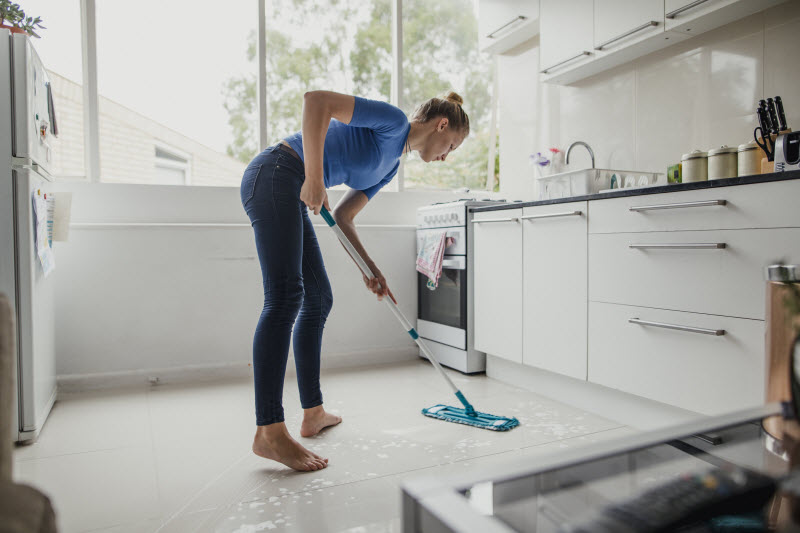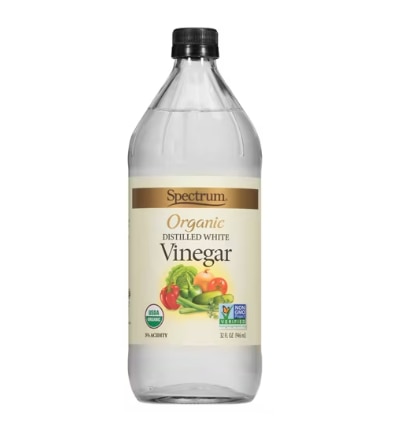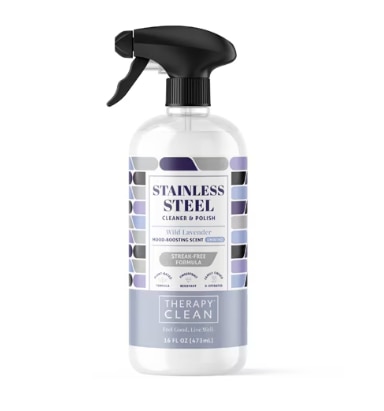The hub of any house is its kitchen, which means it also tends to be the dirtiest. The kitchen hosts the perfect storm of elements that encourage bacteria to grow–heat, moisture, and food–are available, in spades. But you can fight the good and necessary fight to keep your kitchen clean.
To prep yourself, your best weapon in the battle of a sparkling kitchen is baking soda, whether combined with lemon, vinegar or hydrogen peroxide. The acid-base reaction is the reason baking soda and vinegar are cleaning partners in crime. Remember the classic science experiment of the baking soda and vinegar volcano? That same explosive chemical reaction can do wonders in your kitchen. Slathering a baking soda paste over just about anything and then splashing it with vinegar will restore most pots, appliances and surfaces to their former gleaming glory.
Here are seven tactical tips for a quick but effective kitchen glow-up.
7 Steps to Deep Kitchen Cleaning
Rejuvenate old baking sheets
The dynamic duo of baking soda and hydrogen peroxide acts as a mild abrasive. It can make even your most tarnished baking sheets look brand new again. Simply sprinkle your sheet with baking soda followed by a few sprays of hydrogen peroxide, then finish with another layer of baking soda. Come back in a few hours, and voila. No more greasy, stubborn residue.
Use your vacuum to decrumb cabinets
If you are on a tear to clean out your kitchen cabinets, a great hack is to use your vacuum to clean out cabinets, especially hard to reach ones. Instead of wasting time trying to pick up crumbs with a sponge, a vacuum brush attachment will suck them up at the snap of a button. Try this on pantry shelves, too.
Keep it minimal
Counters lined end to end with appliances, jars, utensils, will, over time, become a dirt and dust magnet. Invest in cabinet organizers and try to keep what’s on counters pared down to essentials. This will make for an easier to do daily clean counter sweeps and cut down on stealthy bacteria swaths. When cleaning, move any appliance or item that lives on the countertop. Just because you can’t see what’s under your expresso maker, there still may be a pile of old grounds hiding there.
Cutting board care
After each use, wash plastic boards—ideal for meat, poultry and fish—in the dishwasher. Wooden cutting boards, best for bread, are best cleaned with hot water and mild dish soap and let dry completely. Once in a while, give them a deep scrub treatment with coarse salt and lemon juice, which has bleaching properties and neutralizes odors. To keep wooden boards from drying out, rub them with a food safe mineral oil, about once a month or whenever the wood feels dry. Rub the oil in with steel wool then wipe off any excess after five minutes.
Kitchen cabinets for the win
Nothing says clean kitchen like a bank of spotless cabinets. And nothing gets dirtier, faster, than cabinets that absorb drips and spills and greasy fingerprints. Let vinegar be your go-to cleaner by mixing a 50/50 solution of vinegar and warm water and pour it into a spray bottle. Mist on cabinets, let sit for a minute or two and then wipe clean with a soft cloth.
For extra grimy surfaces, add a few drops of liquid dishwashing detergent to the vinegar and water solution. Bonus tip: Use a toothbrush dipped in the cleaner to scrub the hardware, the wood around the hardware and the crevices of ornate trim. When the cabinet façade is completely clean in all its nooks and crannies, use a second cloth or sponge dipped in clean water to remove the cleaner from all surfaces.
Everything and the kitchen sink
The kitchen sink requires light but daily maintenance. For routine care, wipe with mild dishwashing liquid, warm water, and a soft cloth. When it calls for a deep cleaning, use a mild abrasive cleaner such as a baking soda solution or Bon Ami. If you do you daily diligence with your kitchen sink, according to Martha Stewart, “a sense of cleanliness will pervade everything around it.”
To sponge or not to sponge
Everybody has strong opinions about sponges. Some can’t live without them, others are vocal about not living with them. They can be a hotbed of bacteria and mold, so they do need to be cleaned and changed out frequently. The problem with sponges is they never get really dry. Finding a sponge made from a material, such as a polymer foam, that dries out quicker, or using a brush that’s less porous than a sponge and therefore can’t harbor as much bacteria, could work.
Or make sure to sanitize your sponge, by soaking it in a bleach solution, zapping it in the microwave or running it through the dishwasher. Having an instrument that cleans dirt, instead of spreads it, is essential to best kitchen practices. So get your sponge game on, scrubbing and wiping with discernment, and may the kitchen be the happiest room in your house.




